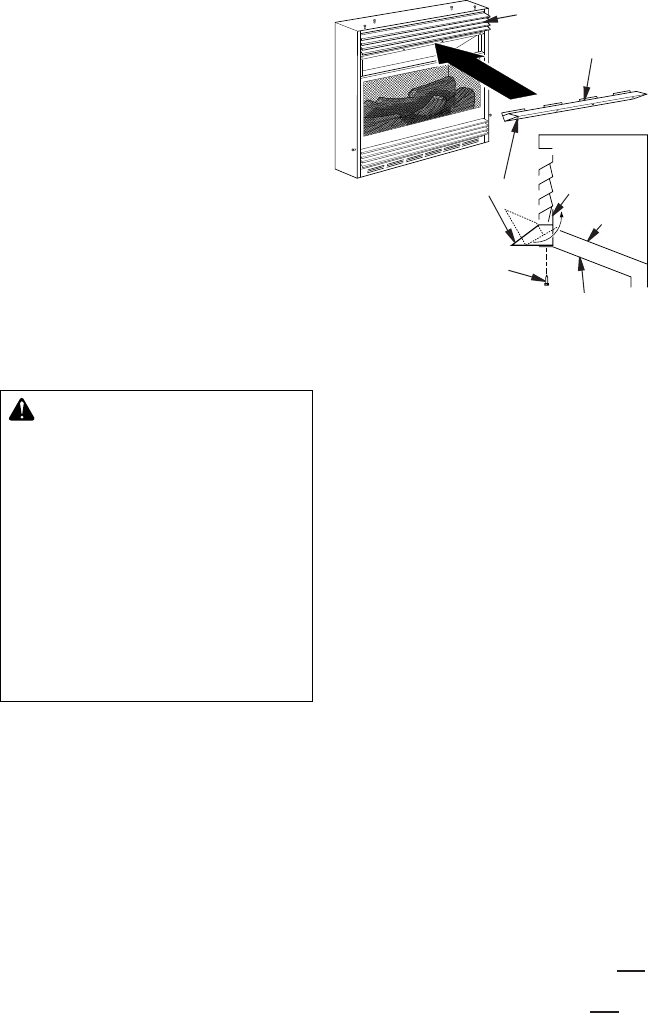
www.desatech.com
113111-01H6
ASSEMBLY
Continued
1. Locate four black phillips sheet metal
screws from the hardware packet.
2. Rotate hood as shown in Figure 3. Make
sure hood tabs point toward replace.
3. Insert hood tabs between bafe and lou-
vers (see Figure 3).
4. Gently rotate hood to upright position.
Make sure hood tabs are behind louvers
and hood is resting on rebox top (see
Figure 3).
5. Align screw holes on hood with screw
holes on rebox top.
6. Insert screws as shown in Figure 3.
Tighten screws rmly.
Figure 3 - Assembling Hood
Hood
Louver
Hood Tab
Bafe
Sheet Metal
Screw
Firebox Top
Hood Tabs
AIR FOR COMBUSTION AND VENTILATION
WARNING: This heater shall
-
-
National Fuel Gas
Code, ANSI Z223.1/NFPA 54, the
International Fuel Gas Code, or
Today’s homes are built more energy efcient
than ever. New materials, increased insula-
tion, and new construction methods help
reduce heat loss in homes. Home owners
weather strip and caulk around windows and
doors to keep the cold air out and the warm air
in. During heating months, home owners want
their homes as airtight as possible.
While it is good to make your home energy
efcient, your home needs to breathe. Fresh
air must enter your home. All fuel-burning ap-
pliances need fresh air for proper combustion
and ventilation.
Exhaust fans, replaces, clothes dryers, and
fuel burning appliances draw air from the house
to operate. You must provide adequate fresh
air for these appliances. This will insure proper
venting of vented fuel-burning appliances.
The following are excerpts from National Fuel
Gas Code, ANSI Z223.1/ NFPA 54, Air for
Combustion and Ventilation.
All spaces in homes fall into one of the three
following ventilation classications:
1. Unusually Tight Construction
2. Unconned Space
3. Conned Space
The information on pages 6 through 8 will help
you classify your space and provide adequate
ventilation.
The air that leaks around doors and windows
may provide enough fresh air for combustion
and ventilation. However, in buildings of un-
usually tight construction, you must provide
additional fresh air.
construction where:
-
2
and
and


















